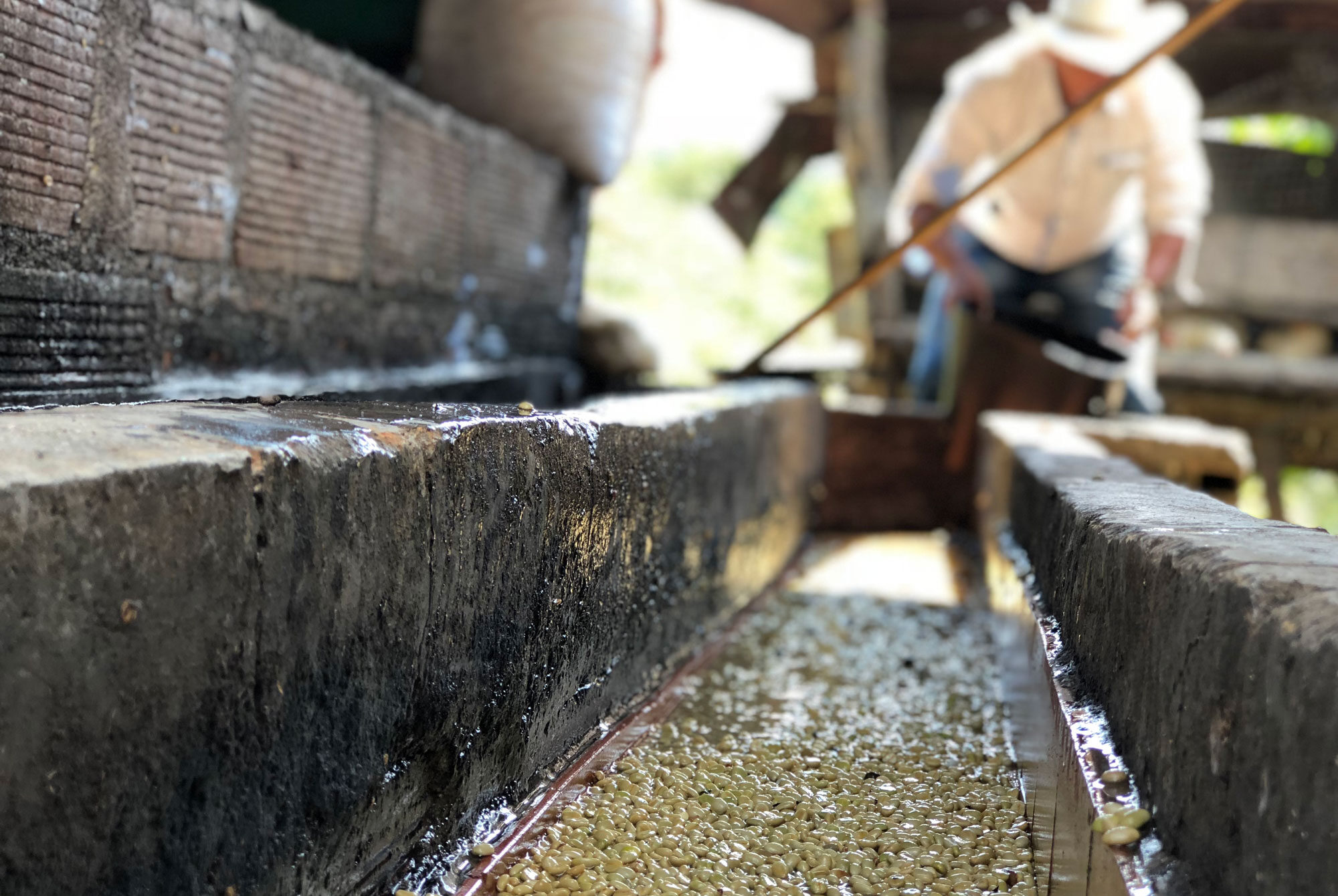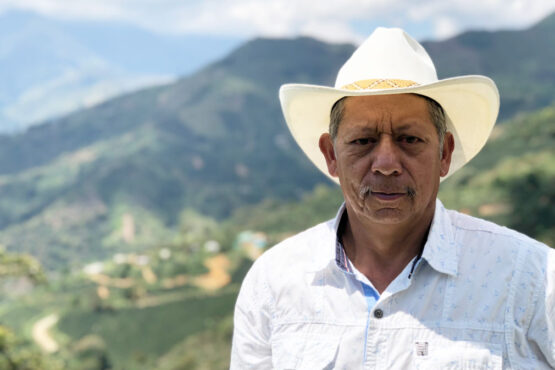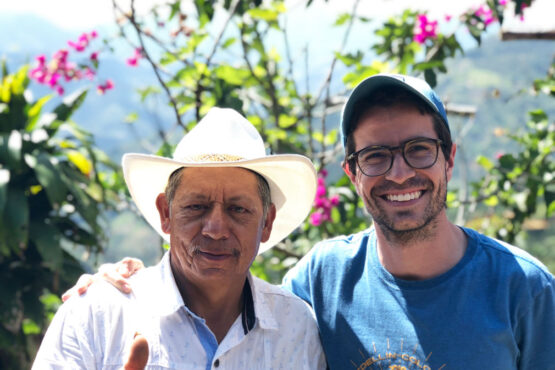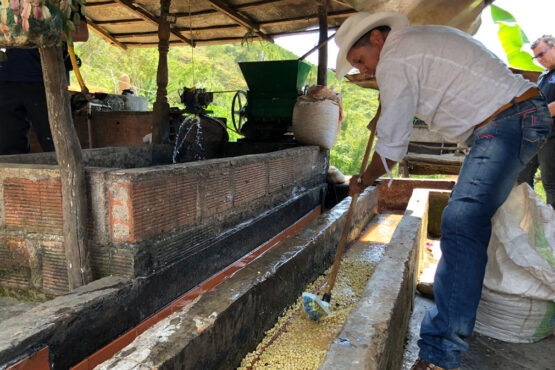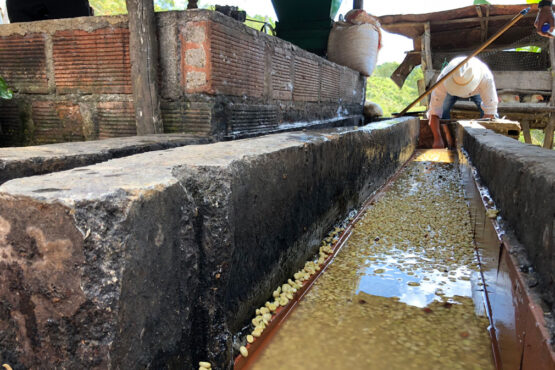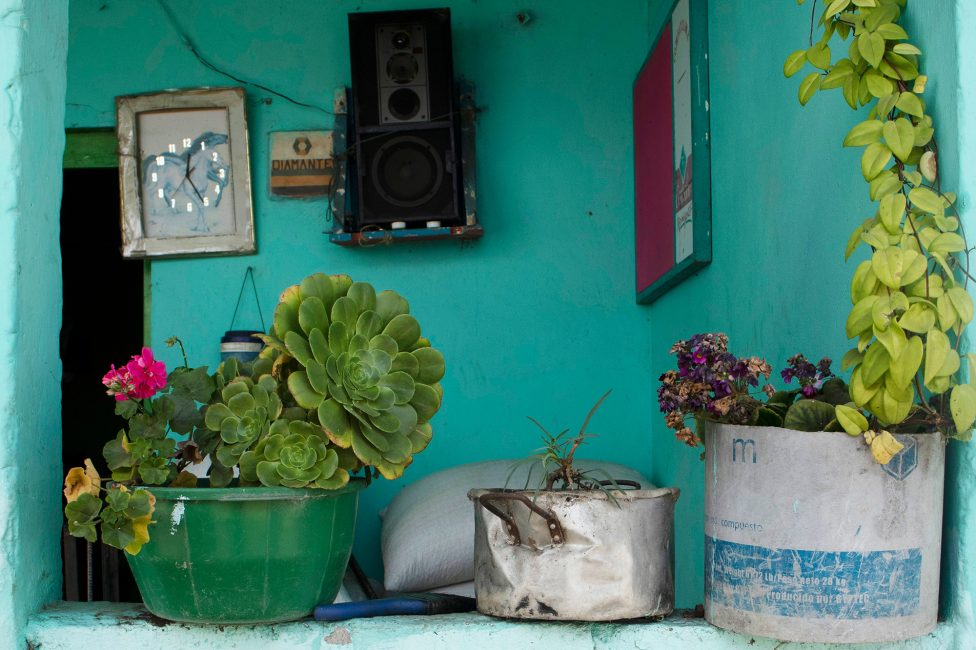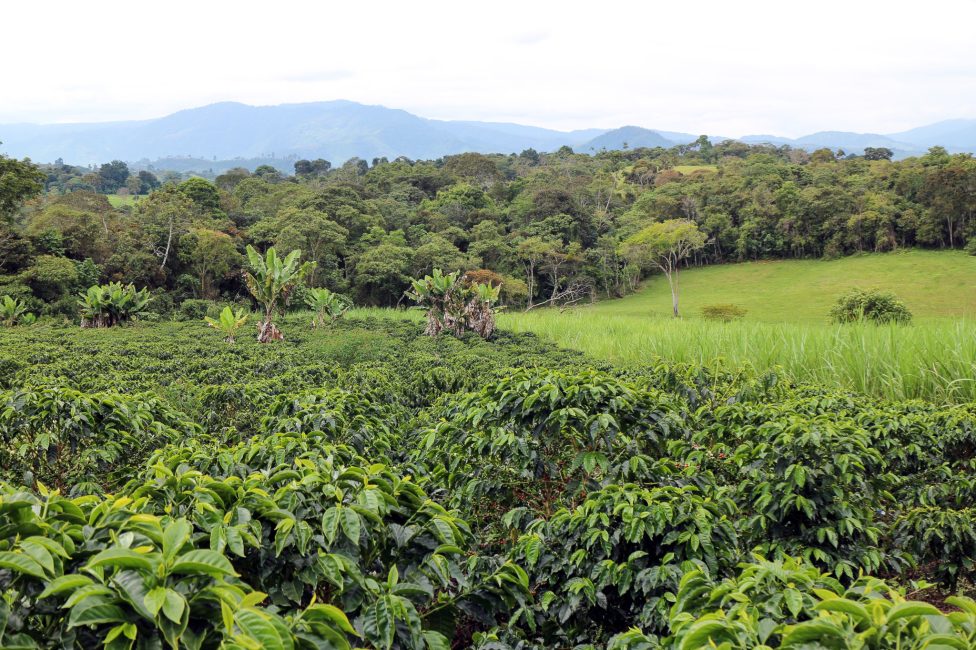El Retiro
Nectarine, candied orange, brown sugar and walnut. Rich and sweet, with great balance and structure.
This micro-lot was produced by Gustavo de Jesús Rivera his wife Socorro Serna on their 3-hectare farm, El Retiro (meaning “the retreat” in Spanish) located near the small community of El Hato, in the municipality of Caicedo in Colombia’s Antioquia state.
El Retiro sits at a staggeringly high 2,200 meters above sea level in the high hills of El Hato. The Rivera family is an institution in the area, where they have produced coffee for decades. The family’s patriarch, Gustavo de Jesús settled here over 40 years ago and raised his family on the farm. His two eldest sons, Over and Duvan, have remained on the farm and assist their father in the farming and processing of El Retiro’s coffee. Each son also manages their own parcel of land on the farm, which was gifted to them by Gustavo de Jesús.
Initially, Gustavo de Jesús chose to purchase land in El Hato because it was more affordable than other parts of Antioquia. The high elevations and cool temperatures of the region were deemed unsuitable for coffee production and the land was dismissed by many. Gustavo chose to plant the Caturra variety, which performs better in cooler climates than other varieties such as Castillo or Colombia and is protected from La Roya at such high elevations. The family still farms only Caturra, and this micro-lot is a 100% single variety lot.
ABOUT EL HATO
El Hato is one of the highest sub-municipalities of Caicedo, and therefore in Colombia. Coffee in the area is grown on the side of deep canyons, dropping down to the mighty Cauca River, some 500m above sea level. The steep canyon walls trap warm currents, which circulate to higher ground and make it possible for coffee to be grown at such high elevations. The unique geological attributes of the region contribute to the outstanding cup profile of coffees farmed and processed in the area. Typically, farms in the area are very small – on average just 2 hectares in size- and are farmed traditionally, with most of the labour being provided by the family.
Smallholder farmers in El Hato were pioneers in planting and producing coffee at these high elevations. They were initially told by Colombia’s national coffee grower’s federation (Federacion Nacional de Cafeteros de Colombia or FNC) that it would be impossible to grow coffee in such a cool climate. However, many farmers bought land here out of necessity as it was much more affordable than at lower elevations, which were considered more prosperous for coffee production.
Their hard work has since paid off, with the area becoming recognised for the exceptional cup quality and characteristics. The cool climate is ideal for the slow ripening of coffee cherries, leading to denser beans and a sweeter, more complex cup profile. Coffees from El Hato now attract high premiums from specialty buyers, who are able to access the region through the work of exporters like our supply partners, Pergamino.
ABOUT ANTIOQUIA
Antioquia is located in central North-Western Colombia. Coffee was introduced to the region in the latter part of the 19thcentury. Since then, this mountainous, fertile department has 128,000 hectares of coffee that is produced by a mix of large estates and tiny farms.
Antioquia only recently became more accessible to specialty coffee buyers – largely thanks to a transformation of the department led by Sergio Fajardo, who was the governor of the department in 2012-2016. Sergio transformed Antioquia’s capital city, Medellín, from a violent and dangerous place to a world-class tourist destination with a strong economy. Coffee has played a significant role in this transformation, and as access to many producers has improved, the region has become one of Colombia’s most important and celebrated coffee-producing areas.
HOW THIS COFFEE WAS SOURCED
This coffee is sourced by our export partners, Pergamino, who work with over 20 small, independent farmers in and around the village of El Hato. Pergamino has done a lot to help promote commercialisation of specialty coffee throughout Antioquia and have actively been working to source and support coffee producers in regions where there is a high potential for quality, but that historically have not had access to specialty buyers.
During harvest, the farmers deliver small lots (around 100-150kg) of dried parchment to Pergamino’s warehouse every 2-3 weeks. Upon delivery, a sample of the dried parchment is milled and assessed for physical attributes, including uniformity of size, presence of defects, moisture content and seed to hull ratio. If the coffee passes the physical assessment it is accepted and the farmer receives their first payment for the coffee, calculated by the weight delivered and a base rate related to the physical quality of the parchment.
The coffee is then cupped and assessed for sensory attributes. After being accepted by the team in neighbouring Caicedo, the coffees are transported to Pergamino’s QC lab in Medellin, where they are further assessed by an expert team of cuppers. Each lot is carefully evaluated and, based on the cup score and profile, the coffee is sorted into different grades of quality and combined into exportable sized lots. Feedback on each lot is relayed back to the producer and after it has sold a second payment is
Each season the team at Pergamino cups through hundreds of small lots from independent farmers, looking for coffees that exhibit excellent cup characteristics and showcase the region where they were produced. The Riviera family’s coffee was selected to be processed separately as a micro-lot for its distinct character and high cup quality.
HOW THIS COFFEE WAS PROCESSED
The lot was selectively hand-harvested, with most labour being provided by the family. They were processed using the washed method at each farm’s ‘micro-beneficio’ (mill).
The coffee was pulped using a small pulper, and then placed into a fermentation tank, where it was fermented for around 48 hours and then washed using cold, clean water from surrounding streams.
It was then carefully dried (over 10–18 days) on parabolic beds, which are constructed a bit like a ‘hoop house’ greenhouse, and act to protect the coffee from the rain and prevent condensation dripping back onto the drying beans. The greenhouse is constructed out of plastic sheets and have adjustable walls to help with airflow, and temperature control to ensure the coffee can dry slowly and evenly.
Once dry, the coffee was delivered to Pergamino’s warehouse, where it was cupped and graded, and then rested in parchment until it was ready for export.
